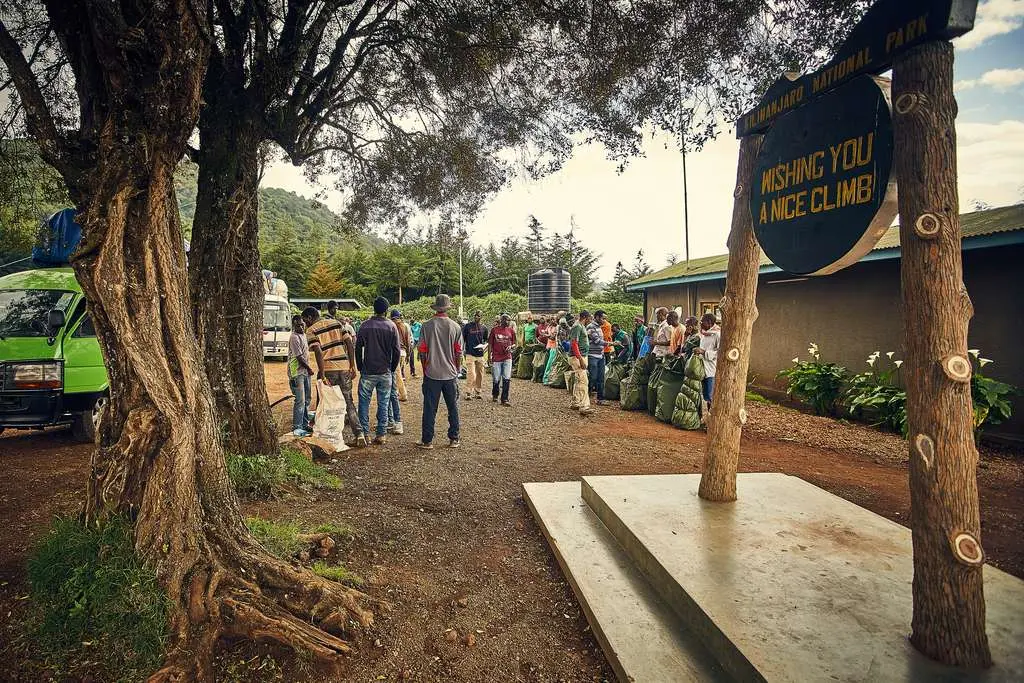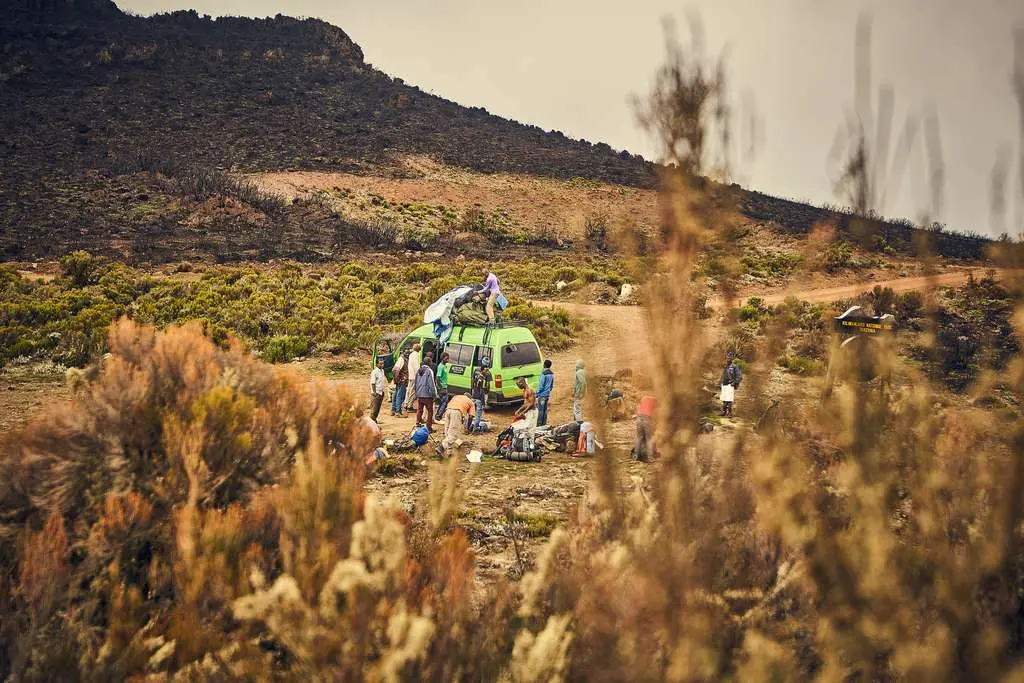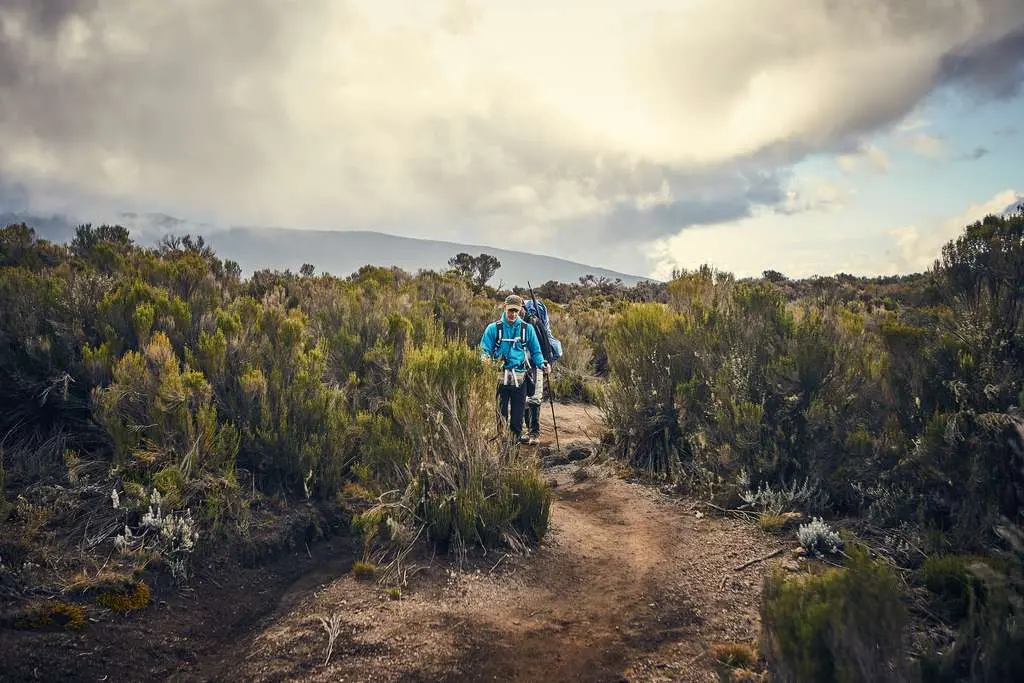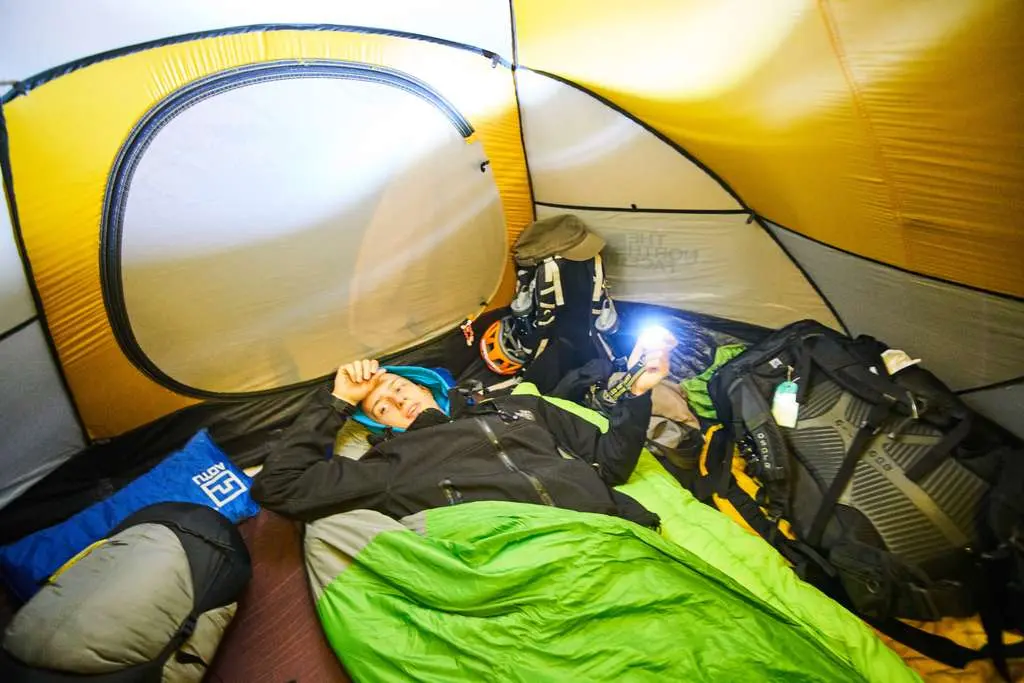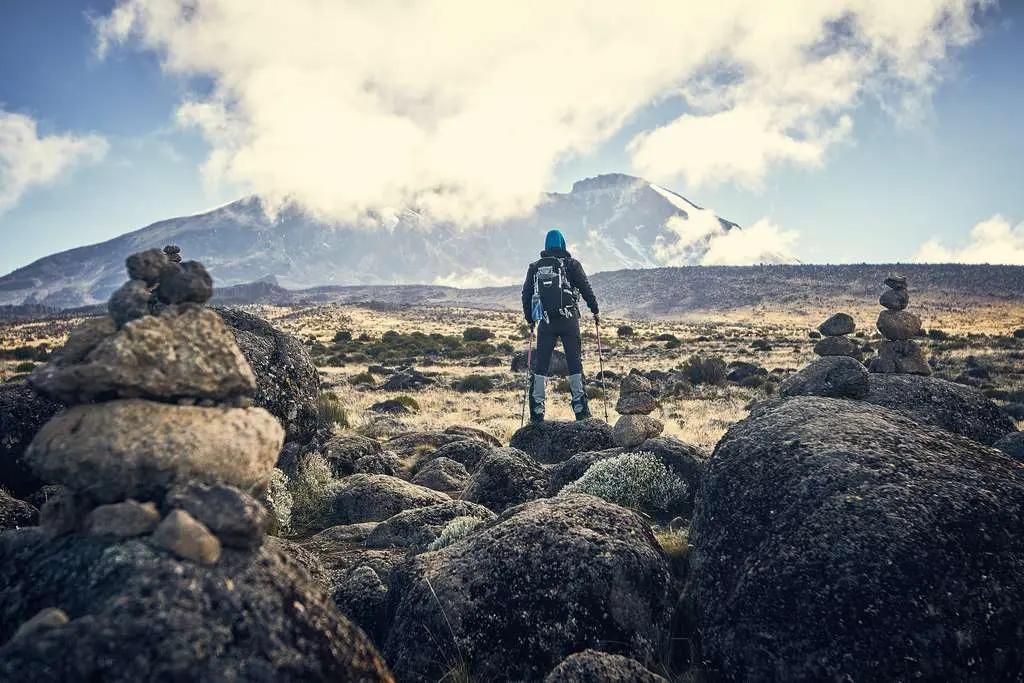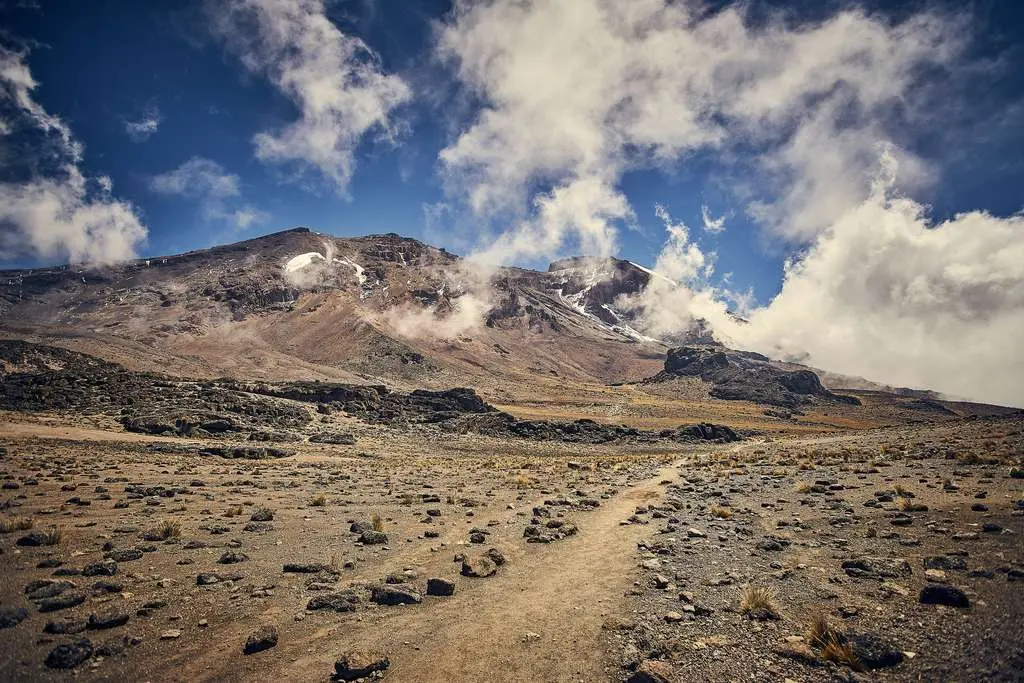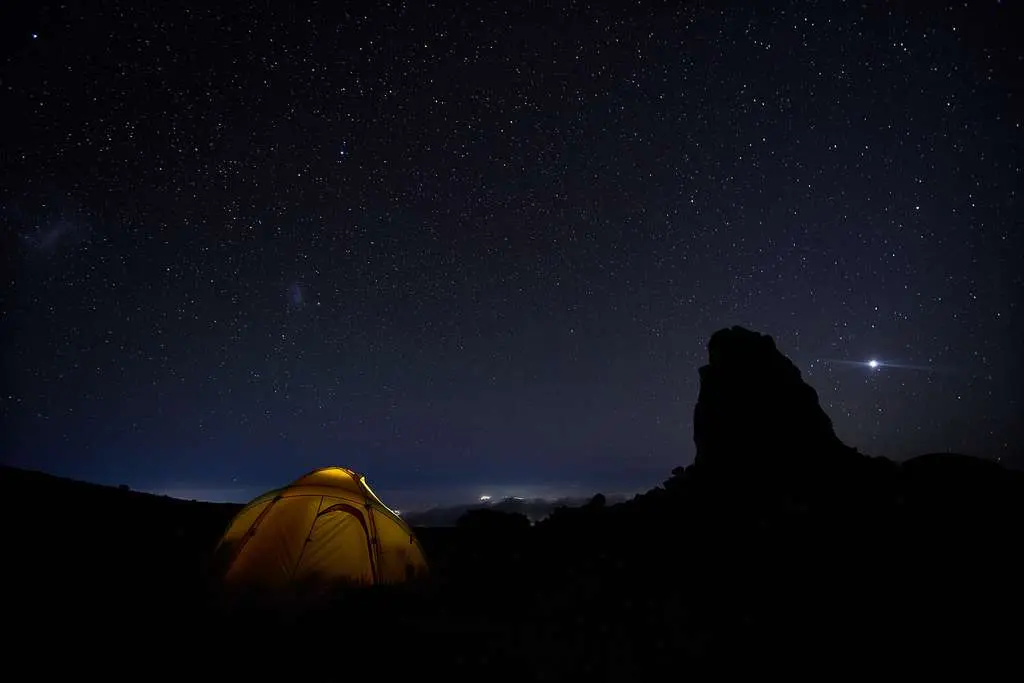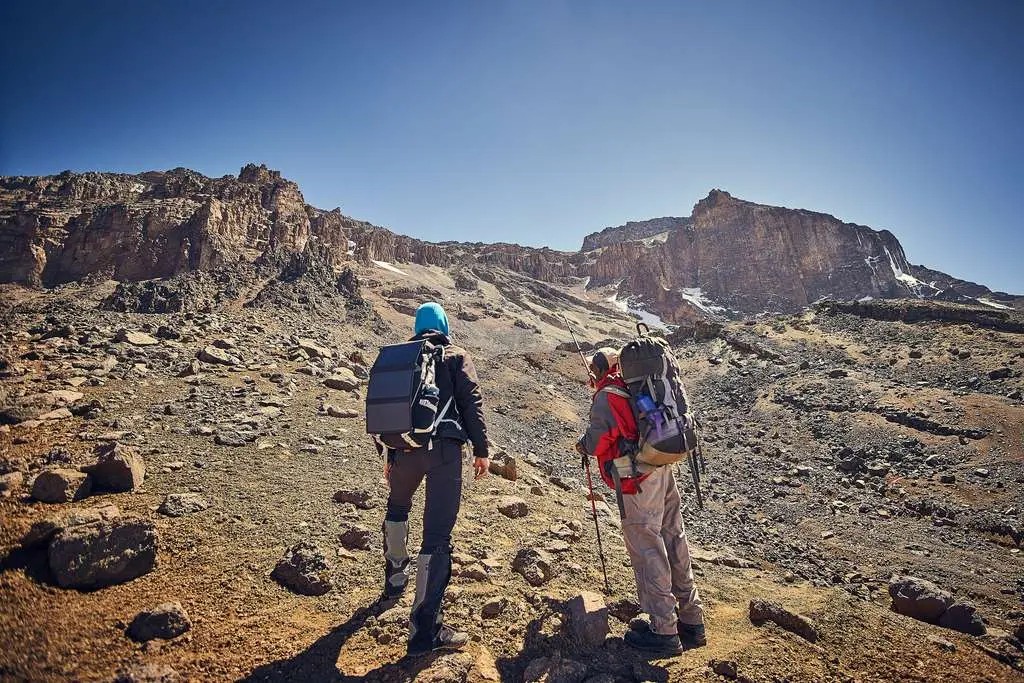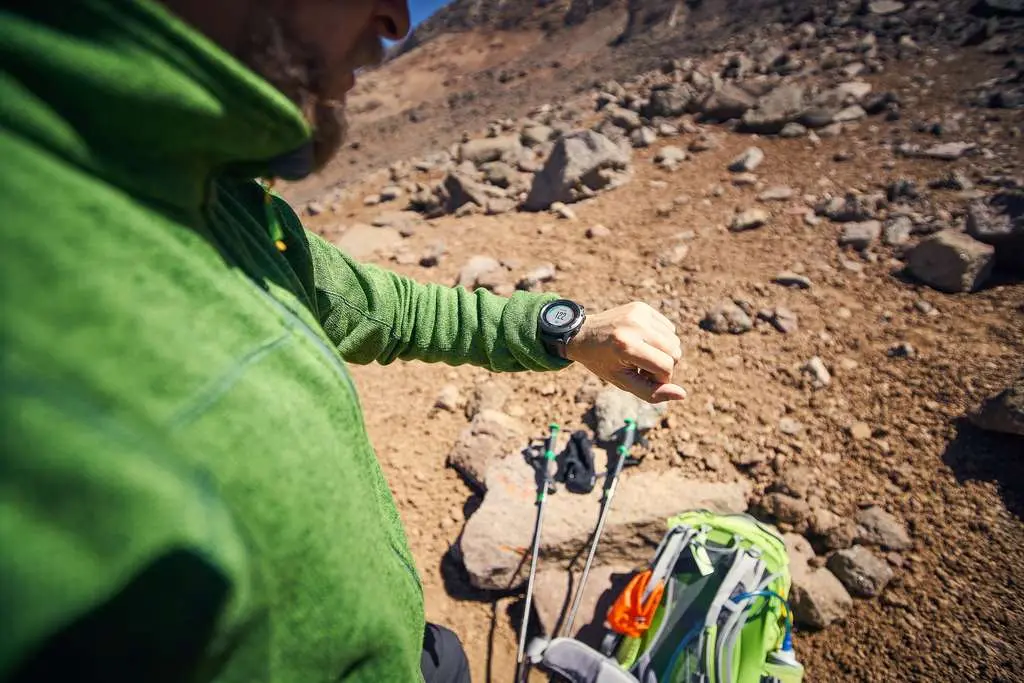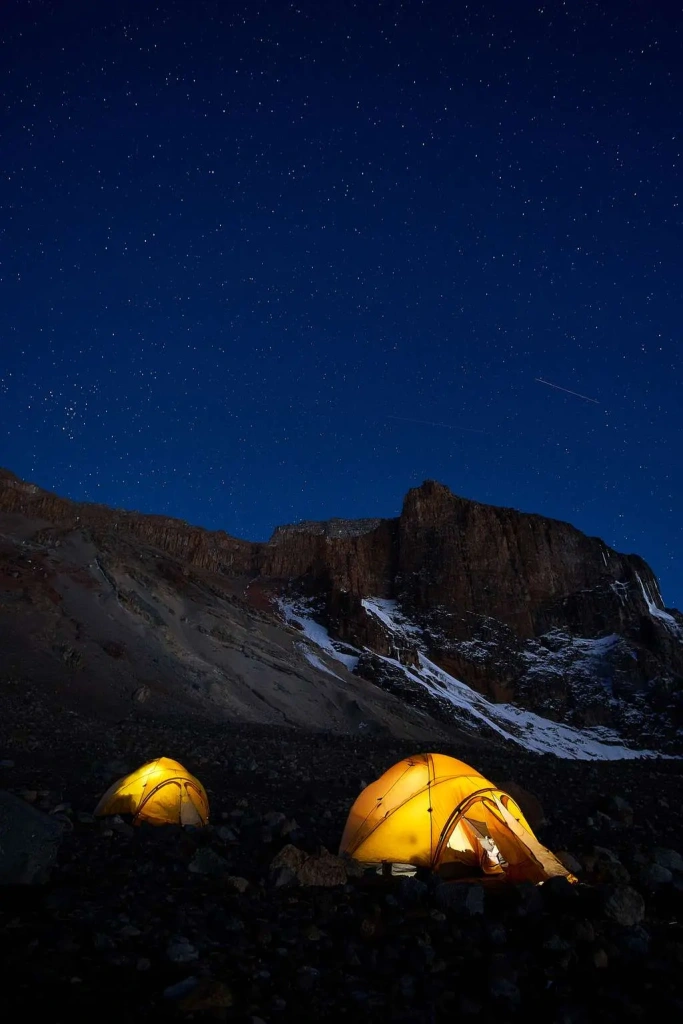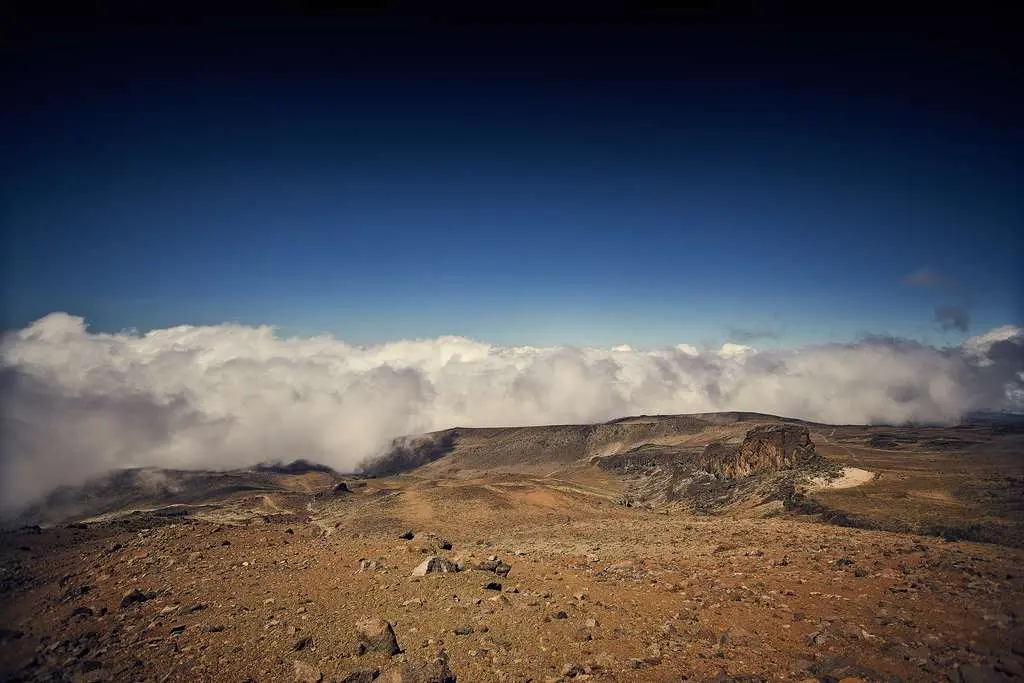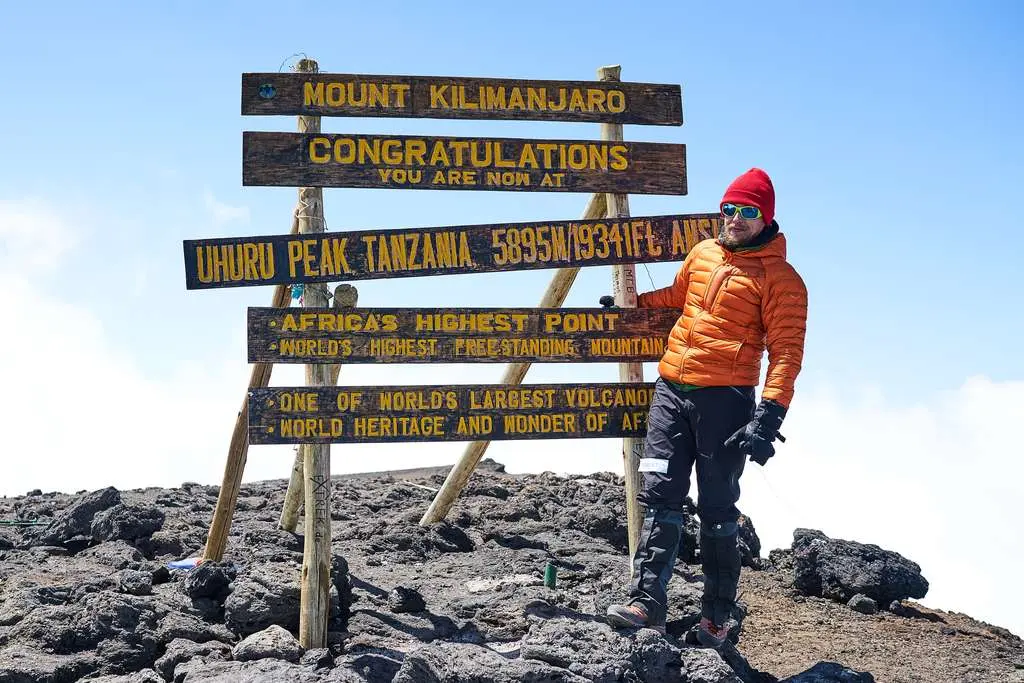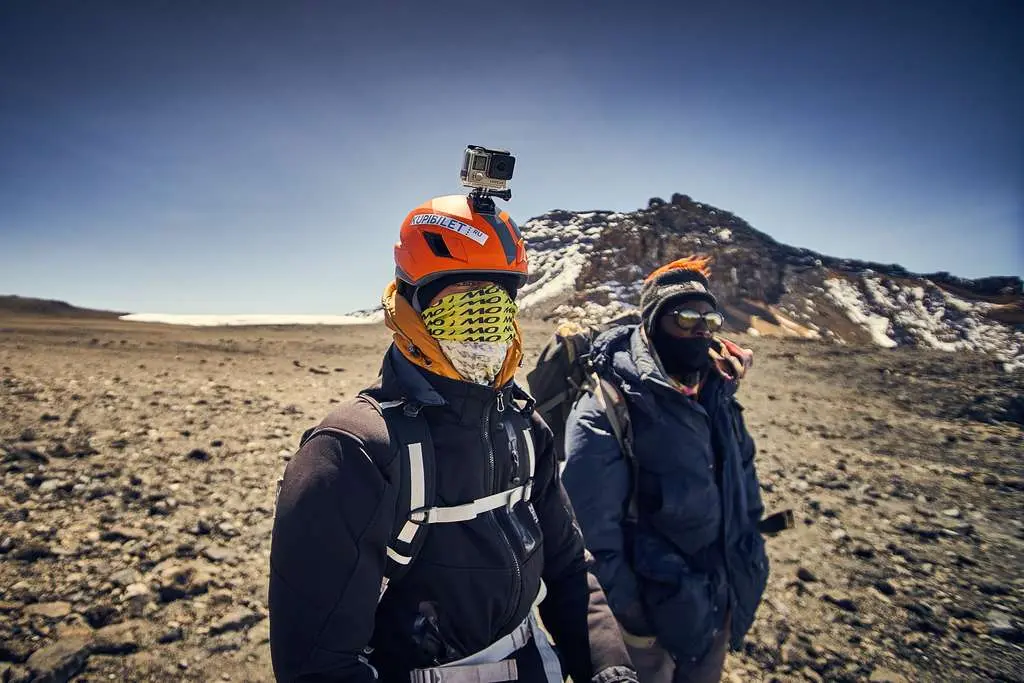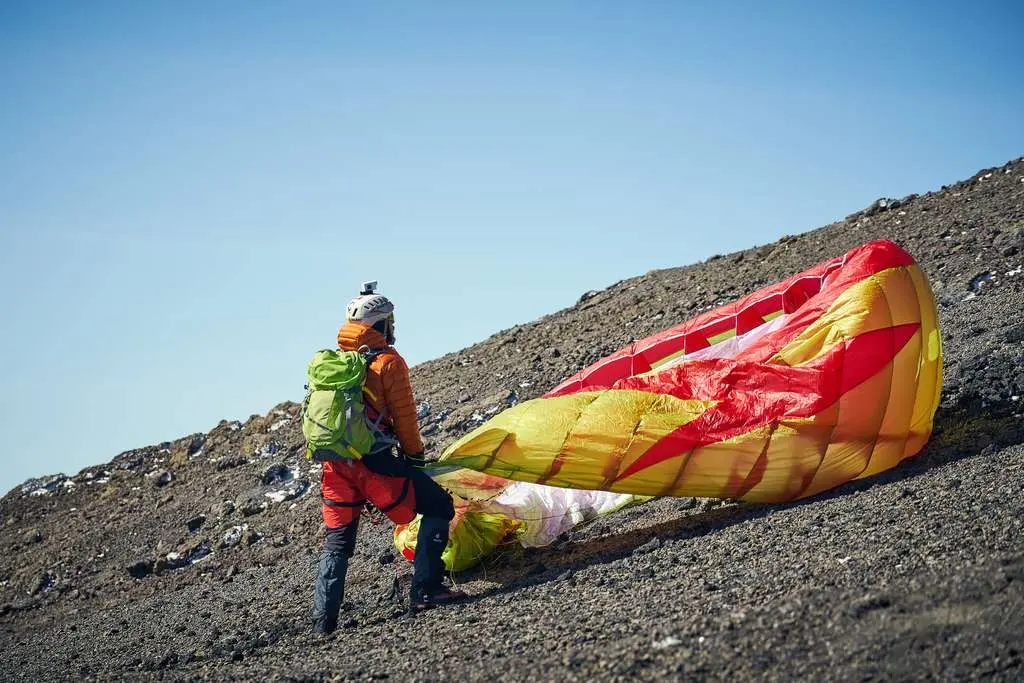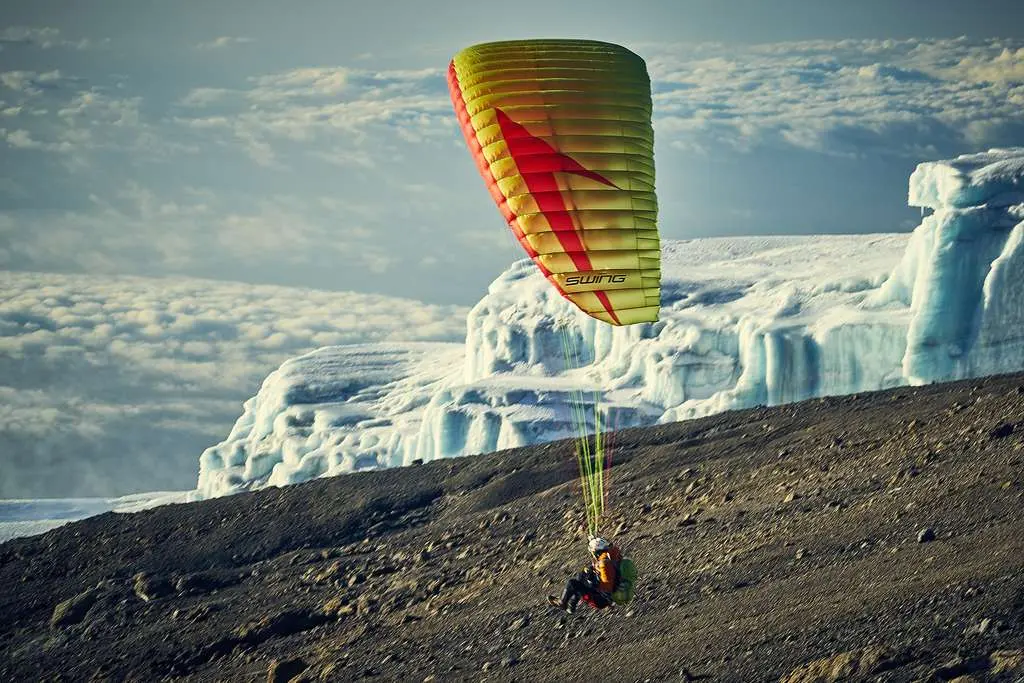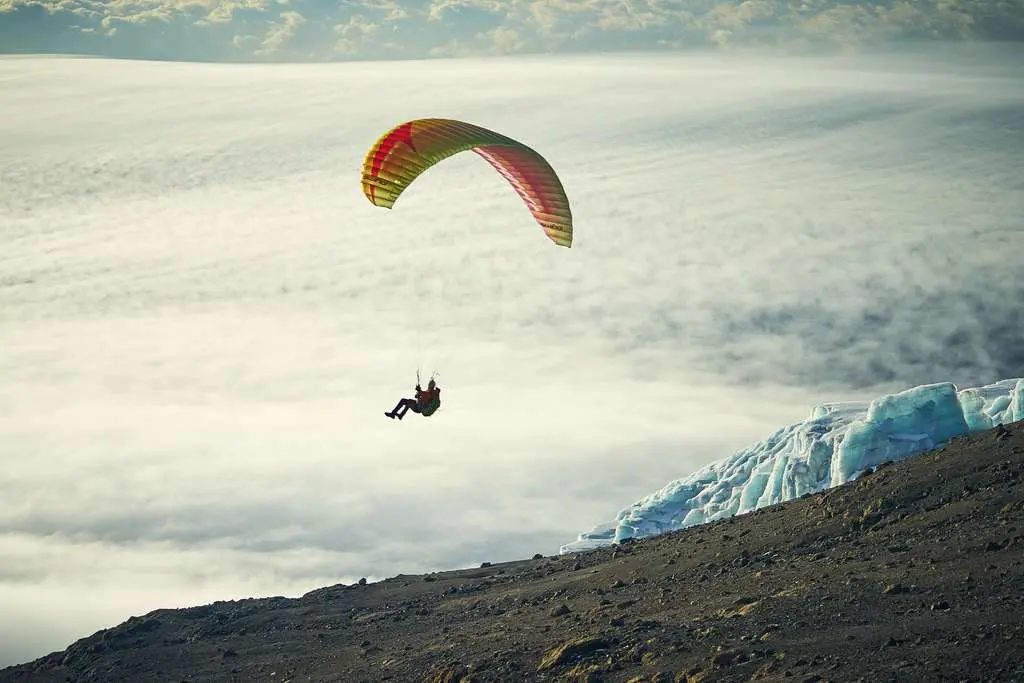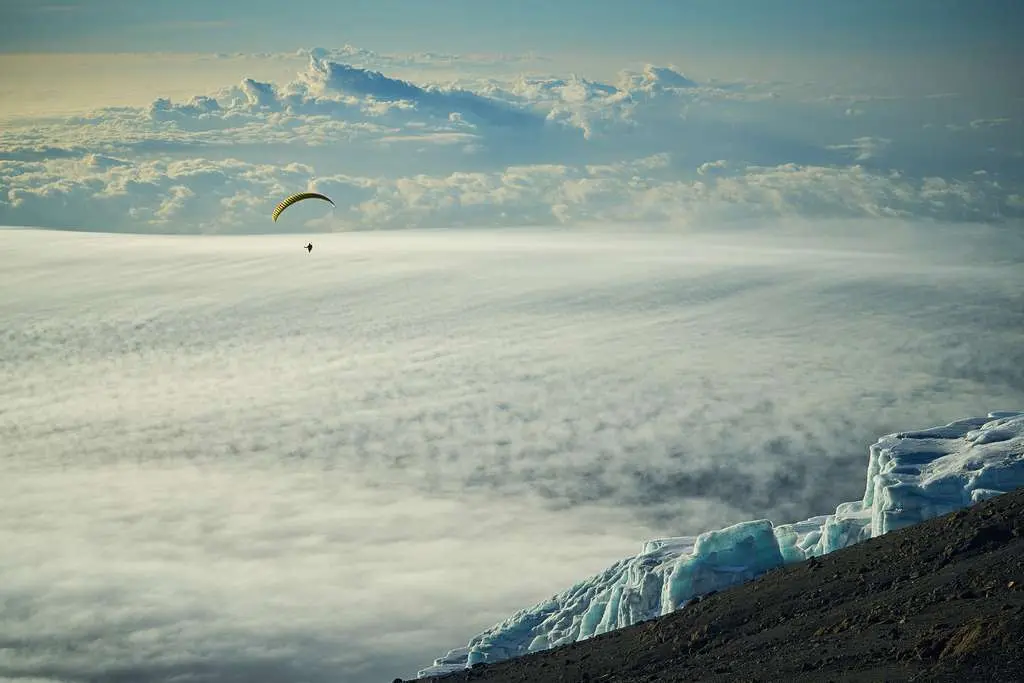Paragliding on the Mount Kilimanjaro
Paragliding on the Mount Kilimanjaro is not an easy undertaking for two reasons.
Firstly, paragliding from the Mount Kilimanjaro requires much planning and coordination. It is not an ordinary trekking expedition because together with usual arrangements, the organizers have to be especially attentive to monitoring weather forecasts, choosing a proper camping location and a starting point, as well taking proper equipment and gear, which is not normally present during the regular climbs.The key idea of the project was to paraglide from the highest point in the summit zone (5,700 +). Therefore, the team decided to set up the camp in the crater of the Mount Kilimanjaro, as it was by far the most convenient location. We could not anticipate in advance how much time the team would have to stay there before the wind would be favorable enough. Safety of the climbing crews is our highest priority, thus we have decided on the climbing route with the smoothest acclimatization transition. Furthermore, we doubled our usual oxygen supplies for this Kilimanjaro trek to make sure that the participants would be able to stay in the crater as long as it might be necessary.
Secondly, all types of unusual activities there require getting a special permit from the park and aviation authorities. In this case, it was necessary to obtain approvals from the TANAPA (Tanzania National Parks Authority), KINAPA (Kilimanjaro National Park Authority), and the Tanzania Civil Aviation Authority.However, these challenges did not intimidate Altezza at all – we have successfully organized the projects of similar or even higher complexity in the past. In 2015 we organized the first wingsuit BASE jump (performed by Valerii Rozov) from the slopes of Mount Kilimanjaro, and in 2016 our team was behind the first slacklining act on Kilimanjaro (which up to this date is the highest slacklining project in the world). Because all those projects were hugely successful, the park administration and the aviation authorities reciprocated and approved this venture. By November 2016 our team has finalized the approval process.
Start of the Expedition
The starting point of the group was the Londorossi Gate. The first legs of the trail were at a moderate altitude of roughly 3500 meters. That was conducive for good acclimatization. Gradually gaining altitude, the group reached the Lava Tower point, from where it turned to the more hazardous, yet much more interesting Western Breach route.
Preparations for the summiting
It was decided to spend several extra nights at the Arrow Glacier Camp to make sure that the crewmembers get acclimatized enough and are 100% ready for camping in the crater of the Mount. This camp is known for its breath-taking sceneries. Furthermore, other expeditions rarely visit this area even during the high season, making it a perfect place for those, who like seclusion.
After some deliberations, the guides decided to start summiting at 5:30 AM, when the rocks were still icebound. It would protect the crew from rockfall. In order to reach the crater safely passing this leg of the trail as soon as possible was critical.
Because the key idea of the entire project was to paraglide from the Uhuru Peak, the most opportune place for camping was in the crater, from where the peak could be reached within several hours of trekking only.
In the Crater
The overwhelming majority of the climbing groups spend no more than 20-30 minutes in the summit zone, while our group had to spend 2-3 days there. Such task is considerably more challenging.
On the first day, the group reached the summit with delay, and the wind gusts were too strong for paragliding. We could not risk the safety of our pilot, and the crew had no other option but to return to the Crater Camp to wait for the next dawn.
Soaring over the Glaciers
The next day the crew spent inspecting the crater in detail and seeking the most opportune place for the launch point. The idea was to start paragliding athwart the slope and then, making the 180-degree turn, to glide in the direction of Moshi. However, the second day was marked by heavy snowfall and fierce wind. All attempts to start eventually flunked. As Sergey (the pilot) later told us, he was so much fatigued, that he could barely reach his tent, where he fell asleep immediately. Lack of oxygen is very exhausting at such altitudes.
The third day in the crater was much colder. However, the wind was favorable. After a quick breakfast, the group headed to the launch point. The fusion of the team’s experience, weather conditions and determination made the project success certain.
Under the joyous cries of the team and envious glances of other climbers, Sergey Shakuto soared over the majestic Mount Kilimanjaro. The view of his silhouette hovering over the glistening glaciers was spectacular. Everything went perfectly – the pilot pushed off the slope, caught a tailwind, and headed for Moshi.
Having soared roughly 30 km, Sergey successfully landed in Weru Weru region at the foothills of Kilimanjaro, where our team was impatiently waiting for him.
After it was all over, Sergey Shakuto said:
Altezza Travel is happy to have finalized another fantastic project.
All content on Altezza Travel is created with expert insights and thorough research, in line with our Editorial Policy.
Want to know more about Tanzania adventures?
Get in touch with our team! We've explored all the top destinations across Tanzania. Our Kilimanjaro-based adventure consultants are ready to share tips and help you plan your unforgettable journey.















